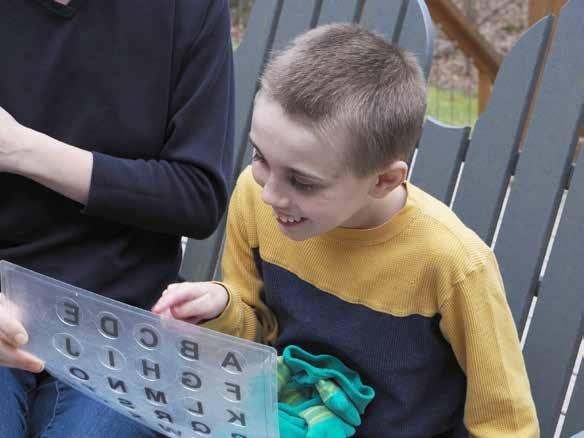
1 minute read
11th Annual Saratoga Bridges Autism Expo & Art Exhibit: Helping Families Connect
continued from front page...
Hahn, who attended last year’s Expo, knows this well. She and her husband Juergen are the parents of Lucas, an 11-year old boy with profound non-speaking autism. The Hahns say that Lucas’ condition has been challenging due to a variety of factors, including a lack of research and treatments for profound autism.
“There are areas that we felt weren’t being explored,” Mariah Hahn said.
“The reality of a lot of medical research, including on autism, is they focus more on people who are actually least-affected by it,” said Juergen Hahn. “It’s much easier to deal with. If you have somebody who is nonverbal, you can’t really ask them the question, ‘How do you feel?’”
Both Mariah and Juergen Hahn are faculty members at Rensselaer Polytechnic Institute, studying biomedical engineering. They attempted standard therapies and treatments for Lucas, including applied behavior analysis, occupational therapy, physical therapy, and speech therapy. They also looked into supplements and medication for ADHD and mood dysregulation.


“Unfortunately, those have been non-beneficial, in fact sometimes have even been harmful,” Mariah Hahn said.
But a new method has given the Hahns hope. Called Spelling 2 Communicate or the rapid prompting method, it utilizes a letterboard to allow a person with non-speaking autism to communicate by pointing to letters on the board.

The Hahns say it is often assumed that because Lucas and other children with profound autism are non-speaking, their intelligence is also impaired. But the Hahns don’t necessarily believe that to be the case.
Many communication devices restrict speech to simple phrases, and Mariah Hahn is questioning if this is truly the highest level of communication possible, or simply a confine of the communication method.
“They really confine your speech. Like, he can say, ‘I want more fish,’” said Mariah Hahn.
“Right now, they’re like, ‘Well that’s the level he can communicate at.’ Is it? That’s where we have to stop. We have to ask, is it? Or is it a confine of the situation?
“We never question, is the type of communication or the modality in which it’s delivered, combined with their own deficits, or their own struggles, preventing them from saying more? And, if they are present, is this really what they would want to be confined to?” continues on page 25...
But the S2C/RPM method has also seen some resistance, with a lack of scientific evidence surrounding the method. Juergen Hahn even admitted he was a bit skeptical at first, before seeing Lucas utilize the method with a practitioner.





